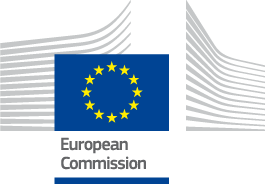The European Commission has published the first official release of the Galileo Open Service Signal-In-Space Operational Status Definition document (OS SIS OSD, v1.1) on 5 July 2016.
Aeronautics industries
The 2016 European Space Solutions conference will showcase the essential role space plays in our everyday lives, and help European industry better understand – and access – its business potential.
On 24 May 2016, Galileo satellites 13 and 14 (codenamed Daniele and Alizée) lifted-off from the European Space Port of Kourou, French Guyana at 10:48:43 CET aboard the Soyuz VS15 flight.
Goods and technologies used for both civil and military purposes (dual-use) offer fantastic opportunities for small and medium-sized enterprises (SMEs). This edition of Business Planet looks at how to set up a project, networks and EU funding.
From 1 April to 30 June 2016, the European Satellite Navigation Competition (ESNC) - the largest international competition for the commercial use of satellite navigation - will once again be looking for outstanding ideas and business models.
The EU-US Cooperation on Satellite Navigation, Working Group C – ARAIM Technical Subgroup has released its Milestone 3 Report. The report details further accomplishments in developing the concept of Advanced RAIM (ARAIM) as the future basis for multi-constellation support for global air navigation.
As users of the United States GPS system experienced timing issues on 26 January after a number of satellites broadcast incorrect coordinated universal time (UTC) correction parameters, the European system EGNOS remained stable and properly synchronised to UTC.
This workshop was aimed at space sector representatives. It was an occasion to get a better understanding about practical tools for access to finance including EFSI, COSME and Horizon 2020, both for small and medium-sized enterprises (SMEs) and bigger companies.
The European Commission has published the latest release of the Galileo Open Service Signal In Space Interface Control Document (OS SIS ICD), v1.2, on November, 11th 2015.
The Maritime Rescue Drone POSEIDRON – a remote-controlled multicopter built to support maritime search-and-rescue services – was the overall winner at this year's European Satellite Navigation Competition (ESNC 2015).
Increasing the supply of apprenticeships is one of the 5 European priorities on VET for 2015-2020, and one of the main objectives of the European Alliance for Apprenticeships.
The European Commission and the European GNSS Agency (GSA) have launched LPV-200 (Localizer Performance with Vertical guidance), a new technology that provides pilots with enhanced instruments for safer aircraft landings, even in poor weather conditions.
The purpose of this contract is to investigate the optimisation of current signals and/or message structures, as well as completely new signals that could further improve performance or add new features to the currently defined Galileo signals.
The European Commission is launching an open call for tenders to award a contract to define and characterise EGNOS authentication concepts.
The European Commission is launching an open call for tenders to award a contract aimed at translating the prediction and forecasting of the ionosphere into tangible results and user-devoted metrics.
The European Commission is launching an open call for tenders to help in defining the necessary design, implementation and execution modalities for E112 caller location based on GNSS, and the way this location will be transferred to the PSAP (Service Contract).
Public consultation on cross-border parcel delivery "Initiative to enhance the affordability, quality and convenience of cross-border parcel delivery"
The Galileo ionospheric model unveiled: a new step towards better performance.
The U.S.-EU Agreement on GPS-Galileo Cooperation signed in 2004 established the principles for the cooperation activities between the United States of America and the European Union in the field of satellite navigation.
